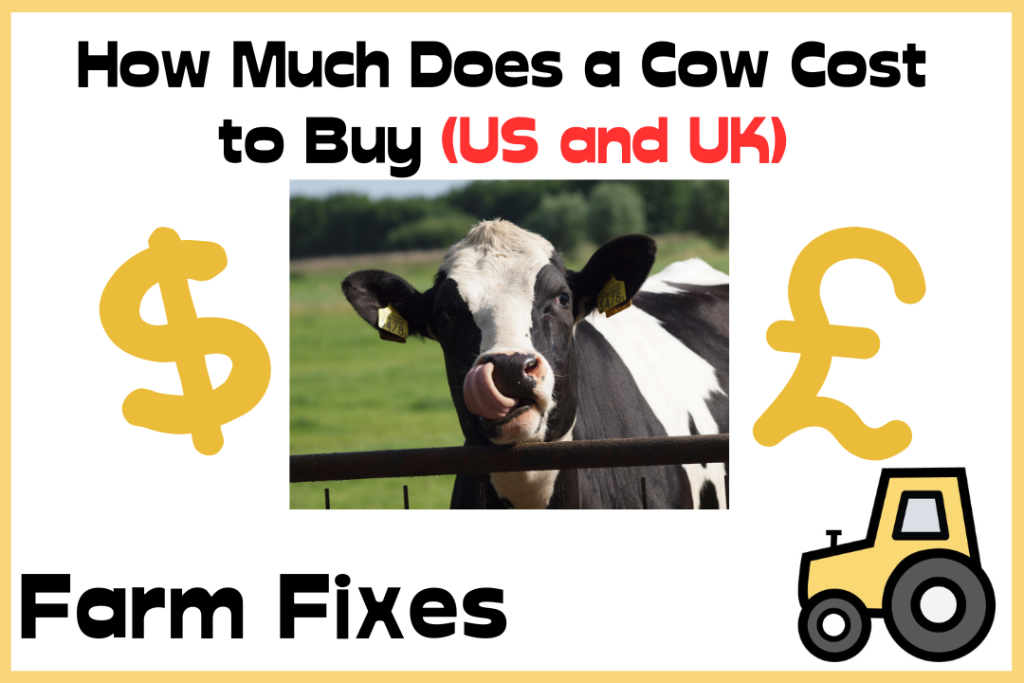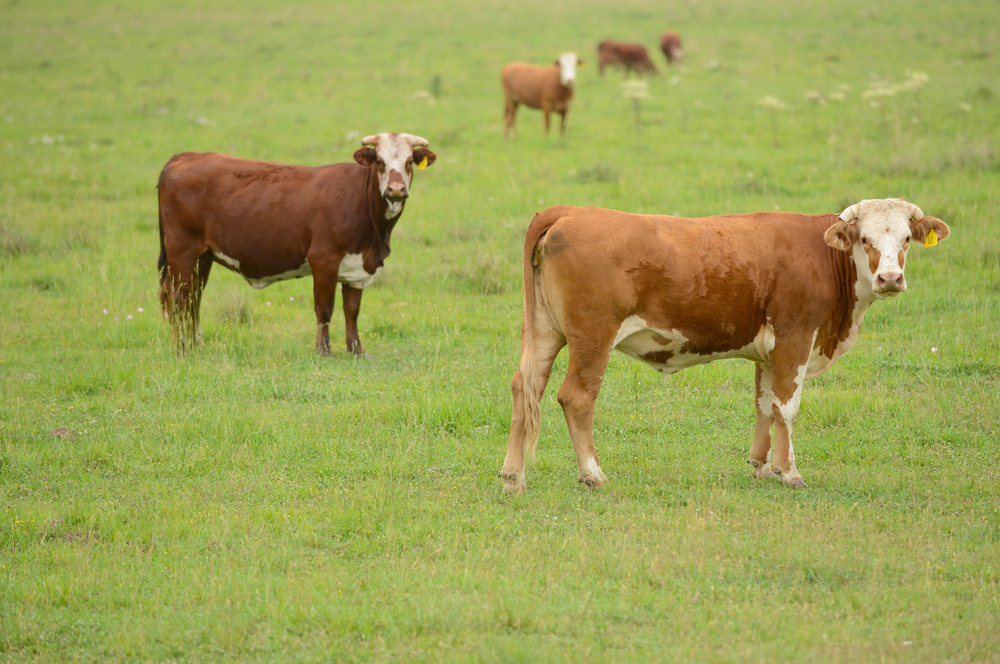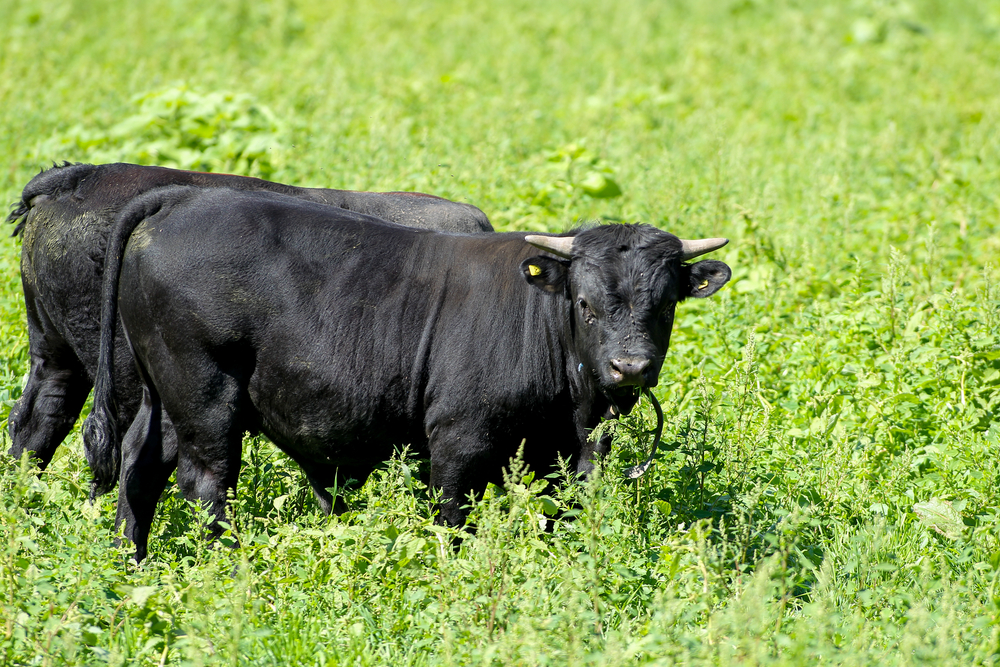In both the United States and the United Kingdom, the cost of purchasing a cow can vary significantly based on factors ranging from breed and age to market fluctuations and regional trends.
The cost of buying a cow in the US ranges from $1,000 to $3,000 for beef cattle, while dairy cows can be $1,500 to $3,500. In the UK, prices range from £800 to £2,000 for beef cattle and £1,500 to £3,000 for dairy cows.
Curious to delve deeper into the intricacies of cow pricing in the US and UK? Read on to discover a comprehensive breakdown of factors influencing the cost of purchasing these bovine companions.

What influences cow prices: A comparative study of US and UK markets
Understanding the costs associated with buying a cow holds paramount importance for anyone entering the world of cattle ownership. As someone who has embarked on this journey, having a clear grasp of the financial aspects is essential for effective planning and decision-making. This knowledge empowers you to budget adequately and avoid unexpected financial strains from overlooking potential expenses.
Comparing cow prices between the US and the UK offers fascinating insights due to the diverse dynamics of each market. Whether in the States or across the pond, this comparison sheds light on global economic trends and regional disparities that play a pivotal role in shaping livestock prices. It’s not just about numbers; it’s about gaining a broader perspective on the industry’s pulse.
In both countries, several factors intricately intertwine to influence cow prices. The breed’s demand, age, health, and market fluctuations all wield their influence. Moreover, regional variations, such as feed costs, land prices, and regulations, add layers of complexity. Understanding this multifaceted web equips you with the knowledge to navigate the market strategically, ensuring that your investment aligns with your goals and resources.
Factors Affecting Cow Prices
Understanding the factors that shape cow prices is crucial for any aspiring livestock owner. From my experience, I’ve learned that these elements intricately weave together to determine the cost of purchasing a cow.
Breeding and Genetics: A cow’s breed and genetic lineage significantly impact its price. Premium species with desirable traits often command higher prices due to their potential for superior meat or milk production.
Age and Maturity: The age of a cow matters. Older cows may have a lower upfront cost but could have reduced reproductive years, affecting long-term value. Younger, more fertile cows might require a higher initial investment.
Purpose and Usage: The purpose for which you intend to keep the cow affects the price. Beef cattle, dairy cows, and dual-purpose breeds have distinct price points. For instance, dairy cows with proven milk production may be priced differently than those raised for meat.
Health and Condition: A cow’s health is pivotal in its price. Well-maintained, healthy cows are more valuable and minimize potential veterinary expenses down the line. Vaccination history and overall physical condition are vital considerations.
Market Demand and Location: Local market conditions and demand can cause price variations. As I’ve observed, factors like region-specific preferences and geographical constraints can lead to fluctuations in cow prices. High-demand areas may fetch higher prices compared to regions with lower demand.
A deep understanding of these factors gives you the tools to make well-considered choices when acquiring a cow.
Whether you aim to initiate a beef production endeavor, establish a dairy operation, or find a loyal bovine friend, grasping these intricacies empowers you to make astute decisions.
By considering aspects like breeding, age, intended use, health, and market dynamics, you can guarantee that your investment aligns harmoniously with your objectives and available resources.
As you set out on this bovine adventure, remember that each of these elements contributes to the captivating mosaic that ultimately shapes the expense of acquiring a cow.

Cow Prices in the United States
Cow prices in the United States exhibit a dynamic landscape influenced by many factors. According to the United States Department of Agriculture’s National Agricultural Statistics Service (NASS), the average price range for beef cattle varies between $1,000 and $3,000, depending on factors like breed, age, and market demand. With their distinct production potential, dairy cows command prices ranging from $1,500 to $3,500.
One intriguing aspect is the regional disparity in cow prices. For instance, cattle prices in Texas, a prominent beef-producing state, might differ significantly from those in Wisconsin, a state with a strong dairy industry. The NASS provides a comprehensive breakdown of cattle prices by state, helping potential buyers gauge regional trends.
Consider a few illustrative examples: In the beef cattle segment, Angus or Hereford breeds can be found at the lower end of the price spectrum, around $1,000 to $1,500. Simmental or Charolais species, prized for their meat quality, tend to be priced between $2,000 and $3,000. Meanwhile, in the dairy category, Holsteins, known for their milk production, range from $1,500 to $2,5003. Jersey cows, valued for their butterfat-rich milk, can fetch prices from $2,000 to $3,500.
These prices are not fixed; they fluctuate based on supply, demand, and broader market trends. Therefore, prospective buyers should stay informed by consulting reputable sources such as the NASS, which regularly updates national data and insights on cattle prices.
Cow Prices in the United Kingdom
The United Kingdom’s cow market is characterized by its unique dynamics and interactions with global factors. Compared to the US, where beef cattle average between $1,000 and $3,000, and dairy cows ranges from $1,500 to $3,500, the UK presents a distinct scenario. According to the Agriculture and Horticulture Development Board (AHDB), the average price range for beef cattle in the UK falls between £800 and £2,000, while dairy cows typically range from £1,500 to £3,000.
Brexit has introduced its layer of influence on UK cow prices. The uncertainty surrounding trade agreements, tariffs, and market access has contributed to market volatility. AHDB notes that fluctuations in exchange rates and potential shifts in trading partners can impact cattle prices and trade flows
Regionally, cow prices can vary considerably within the UK. Factors such as land availability, regional demand, and farming traditions contribute to these variations. For instance, areas with solid dairy industries, like Cheshire and Somerset, might witness different price ranges compared to regions focusing on beef production, such as the Scottish Highlands.
Staying informed about these factors is crucial for those interested in the UK cow market. Reputable sources like AHDB provide valuable insights into current prices, trends, and market analyses. By understanding the distinct dynamics, potential buyers and industry participants can make informed decisions based on their goals, whether it’s to invest in beef or dairy cattle or navigate the intricacies of a post-Brexit marketplace.
Additional Costs and Considerations
I’ve realized through my journey that understanding the full scope of expenses associated with buying a cow is vital. The purchase price is just the tip of the iceberg; several other considerations contribute to the overall cost of cow ownership.
Transportation and Quarantine: Bringing a new cow home involves transportation costs, which vary based on distance and logistics. Additionally, adhering to quarantine procedures is essential to ensure the health and safety of existing livestock.
Shelter and Infrastructure: Preparing suitable shelter and infrastructure is a significant expense. This includes building or adapting barns, fencing, and feeding areas to accommodate the new addition.
Feed and Nutrition: Proper nutrition is crucial for the cow’s well-being. Quality feed and supplements can accumulate costs, fluctuating based on market prices and the cow’s dietary requirements.
Veterinary Care: Regular veterinary check-ups, vaccinations, and potential medical treatments are essential to maintain the cow’s health. It’s wise to allocate funds for these ongoing expenses.
Legal and Administrative Costs: Acquiring a cow involves paperwork, permits, and possibly legal requirements. These administrative aspects come with their own set of costs.
Knowing these additional expenses is crucial to budgeting effectively and avoiding unforeseen financial strain. It’s essential to approach cow ownership with a holistic understanding of the costs involved.
This way, you can ensure that your investment remains manageable and aligns with your resources and goals. Remember, it’s not just about buying the cow; it’s about providing the best care and environment for your new bovine companion.

Tips for Making an Informed Purchase
Embarking on buying a cow requires careful consideration and informed decision-making. Here are essential tips to guide you in making a well-thought-out purchase:
Research and Education: Familiarize yourself with various cow breeds and their market values. Understanding each breed’s distinct qualities and purposes enables you to select the one that aligns best with your goals, whether it’s beef production or dairy farming.
Networking: Building connections within the local farming community can offer valuable insights. Engage with fellow farmers, breeders, and agricultural associations to learn about cow prices, trends, and potential sources.
Setting a Budget: Determine a realistic budget that encompasses the initial purchase price and additional costs like shelter, feed, and veterinary care. Sticking to a well-defined budget ensures that your investment remains manageable in the long run.
Pre-purchase Inspection: Before finalizing the deal, thoroughly examine the cow’s health and condition. A veterinarian’s assessment can uncover potential health issues or red flags, helping you avoid costly surprises.
Considering Long-Term Costs: Look beyond the immediate purchase and factor in ongoing expenses. Account for feed, healthcare, and potential market fluctuations. Preparing for the long-term financial commitment ensures you can provide the best care for your new bovine companion.
By combining research, networking, budgeting, thorough inspections, and a forward-looking approach, you can confidently navigate the complexities of buying a cow. These strategies contribute to a well-rounded decision-making process, ultimately leading to a successful and fulfilling cow ownership experience.
Economic Trends and Market Fluctuations
Looking back at historical trends in cow prices provides valuable insights into the dynamic nature of the cattle market, a perspective I find crucial in understanding this intricate landscape. In both the United States and the United Kingdom, cow prices have exhibited fluctuations influenced by many factors.
External forces like global economic shifts can significantly impact cow prices. Economic downturns may lead to reduced consumer spending on beef and dairy products, affecting demand and prices. Additionally, changes in international trade agreements, like Brexit or trade disputes, can ripple through the market, influencing supply and demand dynamics.
Market fluctuations play a pivotal role in the decision to buy a cow. Awareness of these fluctuations enables potential buyers to time their purchases strategically. Opting to buy during a period of lower prices can lead to substantial cost savings, whereas buying during a peak might entail higher upfront expenses.
Navigating these economic trends requires a blend of vigilance and adaptability. Staying informed about global economic developments, monitoring domestic and international market dynamics, and considering historical patterns contribute to a well-informed decision-making process.
By arming oneself with an understanding of these trends, potential cow buyers can make choices that align with their goals and mitigate the potential impact of market volatility.
Incorporating economic considerations into your cow-buying strategy adds prudence to your endeavor. As I’ve found, being attuned to the historical trends and external forces that shape cow prices equips you with a broader perspective, ultimately enhancing your ability to make informed and strategic decisions within this captivating world of cattle ownership.
Financing and Investment Considerations
Understanding financing options is integral when considering the purchase of a cow, a realization I’ve come to through my own experiences. There are various routes to explore, each with its considerations.
Traditional loans from banks or agricultural lending institutions are a common choice. These loans offer structured repayment plans and competitive interest rates, making them a reliable option for established farmers and newcomers.
Agricultural grants, provided by government agencies or organizations, offer financial assistance that doesn’t require repayment. While competitive, securing these grants often involves a rigorous application process and adherence to specific criteria.
Alternative financing methods also merit attention. Crowdfunding platforms and peer-to-peer lending can provide avenues for securing funding from a wider community. Lease-to-own arrangements allow you to acquire a cow by making periodic payments, akin to a rental agreement that culminates in ownership.
Beyond financing, it’s essential to view cow ownership as an investment within a broader agricultural or farming business plan. Consider how the purchase aligns with your long-term goals. Will the cow contribute to beef or dairy production or be a foundation for future breeding endeavors?
Evaluating the potential returns on investment, factoring in operational costs, and estimating the timeline for profitability are critical components of your decision-making process.
Whether dipping your toes into agriculture or expanding an existing operation, examining financing options and weaving the cow purchase into your larger business strategy is a reasonable move.
As I’ve found, aligning your investment with your financial capacities and aspirations is crucial in setting yourself up for a prosperous and sustainable venture.
Sustainability and Ethical Considerations
Recognizing the growing significance of ethical and sustainable practices in the livestock industry is vital, an insight I’ve gained from observing shifting consumer preferences. As awareness of animal welfare and environmental impacts rises, these considerations can influence a cow’s perceived value and cost.
Ethical practices encompass humane treatment, access to proper nutrition, and comfortable living conditions. These factors directly impact the health and well-being of the cow, affecting its quality of life and productivity.
Cattle raised in environments that prioritize ethical standards tend to be healthier, which can contribute to higher-quality meat or dairy production. Consequently, the perceived value of ethically raised cattle is often higher due to their perceived benefits.
Sustainability is another aspect gaining traction. Consumers increasingly seek products that are produced in environmentally responsible ways. Cattle farming practices that minimize resource usage reduce emissions, and promote biodiversity are gaining favor.
This shift in consumer preference can increase demand for cattle raised under sustainable management practices, potentially influencing their market price.
With the rise of conscious consumerism, it’s unsurprising that ethical and sustainable considerations are playing an increasingly important role in the cattle market. As I’ve discovered, these considerations extend beyond mere trends; they reflect a broader societal shift toward responsible and mindful consumption.
Whether you’re a farmer aiming to align with ethical practices or a consumer seeking ethically raised beef or dairy products, understanding how these considerations impact cow prices are pivotal in navigating this evolving landscape.
Conclusion
In the world of cow buying, there’s a lot to consider. It’s a big decision from how much a cow costs to other expenses like shelter, feed, and medical care. Learning about different cow breeds, networking with farmers, and setting a budget can help you make an intelligent choice.
Remember that cow prices can change because of the economy and market trends. Knowing the history of cow prices and how global changes can affect them is essential whether you’re in the US or the UK.
Ethical and sustainable practices are also essential factors. People care more and more about how animals are treated and their environmental impact. Buying cows raised ethically and sustainably might cost more, but it can be worth it.
Remember, it’s not just about the price tag – the value, how the cow fits into your plans, and the bigger picture of responsible farming.
So, if you’re considering buying a cow, take your time. Do your research, talk to experts, and plan for all the costs. Think about your goals and what kind of cow you want. And don’t forget about the changing world around you – ethical and sustainable choices are becoming more critical. By considering all these things, you’ll be well-prepared to decide that’s right for you and your future with your new cow.
Frequently Asked Questions:
How much does a cow cost in the US and UK on average?
The average cost of a cow varies depending on factors like breed and purpose. In the US, beef cattle can range from $1,000 to $3,000, while dairy cows may be priced between $1,500 and $3,500. In the UK, beef cattle generally range from £800 to £2,000, and dairy cows from £1,500 to £3,000.
What factors influence the price of a cow?
The price of a cow is affected by factors such as breed, age, health, market demand, and regional variations. Breeds with desirable traits, younger cows, and those in good health often command higher prices. Local market conditions and regional preferences also play a role.
Are there differences in cow prices between the US and UK?
Yes, there are differences. Cow prices vary based on regional economic conditions, farming practices, and market demand. Generally, cow prices in the UK tend to be slightly lower compared to the US, but specific breed preferences and market trends contribute to variations.
Are there additional costs beyond the initial purchase price of a cow?
Buying a cow involves more than just the upfront cost. Additional expenses include transportation, shelter construction or modification, feed, veterinary care, and potential legal and administrative costs. These ongoing expenses should be factored into your budget.
How do economic trends and market fluctuations impact cow prices?
Economic trends, global shifts, and market fluctuations can cause cow prices to change. Economic downturns or changes in trade agreements can affect demand and supply, influencing prices. Awareness of these trends helps potential buyers time their purchases strategically and make informed decisions.
What are some typical responsibilities associated with owning cows?
Owning cows comes with various responsibilities, such as providing proper nutrition and water, maintaining clean and safe living conditions, arranging for regular veterinary care, managing breeding and reproduction, and adhering to local regulations for animal welfare and health. It’s essential to be prepared for these commitments before acquiring cows.
Can I raise a single cow, or do they require companionship?
Cows are social animals and generally thrive in the company of their kind. While it is possible to raise a single cow, they may experience loneliness and stress without companionship. Having at least one other cow or compatible animal is recommended to provide social interaction and support for their well-being.
